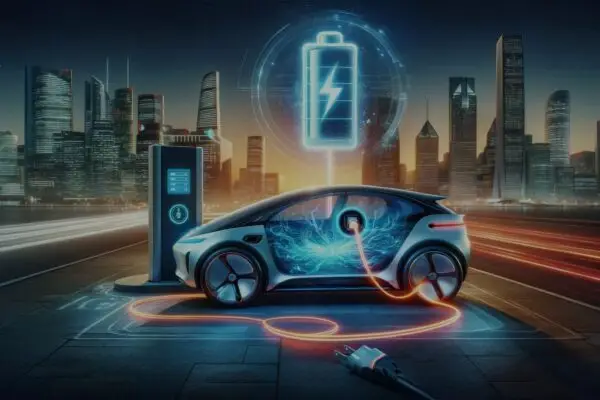Understanding Electric Vehicles: How They Work
Electric vehicles (EVs) represent a pivotal advancement in transportation technology, primarily focused on reducing carbon emissions and reliance on fossil fuels. At the heart of every electric vehicle lies the battery, which stores electrical energy and provides power to the electric motor. Most modern EVs utilize lithium-ion batteries due to their high energy density and efficiency, allowing for longer ranges between charges compared to traditional lead-acid batteries.
The electric motor is another critical component of EVs, converting electrical energy from the battery into mechanical energy to drive the wheels. Unlike internal combustion engines, which rely on a series of complex movements and combustion processes, electric motors deliver power instantly. This characteristic leads to a more responsive driving experience and contributes to the overall efficiency of the vehicle.
One of the most innovative aspects of electric vehicles is regenerative braking, a technology that captures energy typically lost during braking and redirects it back to the battery. This not only increases the overall efficiency of the vehicle but also extends the driving range by making use of energy that would otherwise be wasted. Additionally, EVs produce no tailpipe emissions, contributing significantly to cleaner air in urban environments.
When examining energy efficiency, electric cars have a distinct advantage over internal combustion engine vehicles. EVs convert over 60% of the electrical energy from the grid to power at the wheels, while conventional gasoline-powered vehicles only convert about 20% of the energy stored in gasoline. This stark difference underscores the potential for electric vehicles to facilitate a transition toward zero emissions, particularly in densely populated cities where pollution impacts air quality and public health.
The Environmental Impact of Electric Cars
The transition to electric vehicles (EVs) plays a crucial role in reducing air pollutants and greenhouse gas emissions, making them a vital component in addressing climate change. Unlike traditional internal combustion engine vehicles, electric cars produce zero tailpipe emissions, significantly improving urban air quality. This reduction in harmful pollutants benefits public health, particularly in densely populated areas where air quality has been a growing concern.
When evaluating the environmental impact of electric cars, it is essential to consider their entire lifecycle. The production phase does involve the extraction and processing of raw materials, such as lithium, cobalt, and nickel, which are required for batteries. However, advancements in technology and recycling processes are increasingly mitigating these concerns. Manufacturers are now adopting more sustainable practices and using recycled materials, ultimately reducing the environmental footprint. Furthermore, the development of battery recycling programs aims to reintroduce materials back into the production cycle, minimizing waste and resource consumption.
Common misconceptions about electric vehicles often center around battery disposal and the sourcing of materials. In reality, the industry is rapidly evolving to establish recycling methods that ensure valuable resources are not lost at the end of a vehicle’s life. Initiatives led by countries such as Norway and cities like San Francisco exemplify the shift toward more sustainable practices. Norway has emerged as a leader in EV adoption, with over 54% of new car sales in 2020 being electric, showcasing a commitment to reducing emissions and promoting eco-friendly transportation. Similarly, San Francisco’s extensive charging infrastructure demonstrates how local governments can support the shift towards a cleaner transportation ecosystem.
As the world moves toward a greener future, electric cars not only symbolize a commitment to sustainability but also represent a transformative approach to reducing environmental impact through innovative technologies and responsible practices.
Infrastructure and Policy: Building a World for Electric Vehicles
For the widespread adoption of electric vehicles (EVs), an efficient infrastructure and supportive policy framework are crucial. As the demand for electric cars rises, developing a robust network of charging stations becomes essential. These charging facilities need to be strategically located across urban and rural areas to ensure accessibility for all users. The aim is to mitigate range anxiety, which is a significant concern for potential EV buyers. Public charging stations, along highways, at workplaces, and in residential areas play a pivotal role in transforming consumer behavior towards electric vehicle ownership.
Moreover, enhancing grid capacity is necessary to manage the increased electricity demand posed by a growing fleet of EVs. Upgrading existing electrical grids and investing in smart grid technologies can facilitate better management of energy distribution, especially during peak hours. This emphasizes the need for a seamless integration of electric vehicles into the power grid. Furthermore, the shift towards renewable energy sources, such as solar and wind, is essential to ensure that the electricity powering these vehicles is sustainable and truly lowers emissions.
Government initiatives also play a foundational role in creating an environment conducive to electric vehicle adoption. Offering incentives, such as tax credits and rebates for electric car buyers, can make these vehicles more financially attractive. Regulations promoting the installation of charging infrastructure and encouraging the development of renewable energy sources further stimulate growth in this sector. Additionally, public-private partnerships can accelerate investments in EV infrastructure, thereby fostering innovation and speeding up the transition to a sustainable transportation ecosystem.
Therefore, the intersection of infrastructure development and proactive policy measures is fundamental to paving the way for electric vehicles and ultimately creating a greener future. With the right framework in place, electric cars can seamlessly integrate into society, encouraging cleaner transportation methods and contributing to the reduction of emissions worldwide.
The Future of Electric Cars: Trends and Innovations
The landscape of electric vehicles (EVs) is rapidly changing, driven by technological advancements and a collective aim towards a sustainable future. One of the most exciting trends is the development of autonomous electric vehicles (AEVs). With their ability to navigate roads and traffic without human intervention, AEVs promise to enhance road safety while optimizing energy efficiency. This innovation not only decreases potential emissions through reduced congestion and smoother traffic flows but also transforms the commuting experience for consumers, creating a paradigm shift in transportation.
An essential component of the electric car revolution is the ongoing improvement in battery technology. Current research focuses on increasing the energy density of batteries, which would allow electric cars to travel greater distances on a single charge and significantly reduce the time taken for recharging. Solid-state batteries, for instance, offer the possibility of faster charging times and enhanced longevity compared to traditional lithium-ion batteries. As these advancements materialize, consumers may find electric vehicles increasingly appealing due to lower total ownership costs and improved performance metrics, thus contributing to a broader acceptance of EVs in the automotive market.
Another innovative concept gaining traction in the electric vehicle sector is the vehicle-to-grid (V2G) system. This technology allows electric vehicles to not just consume energy but also return unused power back to the grid. In turn, this can create more stabilized energy systems, particularly as renewable energy sources are increasingly integrated into the grid. With a focus on sustainability, this innovative approach aligns well with the global vision of creating a resilient energy ecosystem that supports electric vehicles with minimal emissions. As consumer awareness and acceptance of these technologies grow, the future of electric cars looks promising, paving the way for a cleaner and more efficient mode of transportation in a post-emissions society.


No responses yet